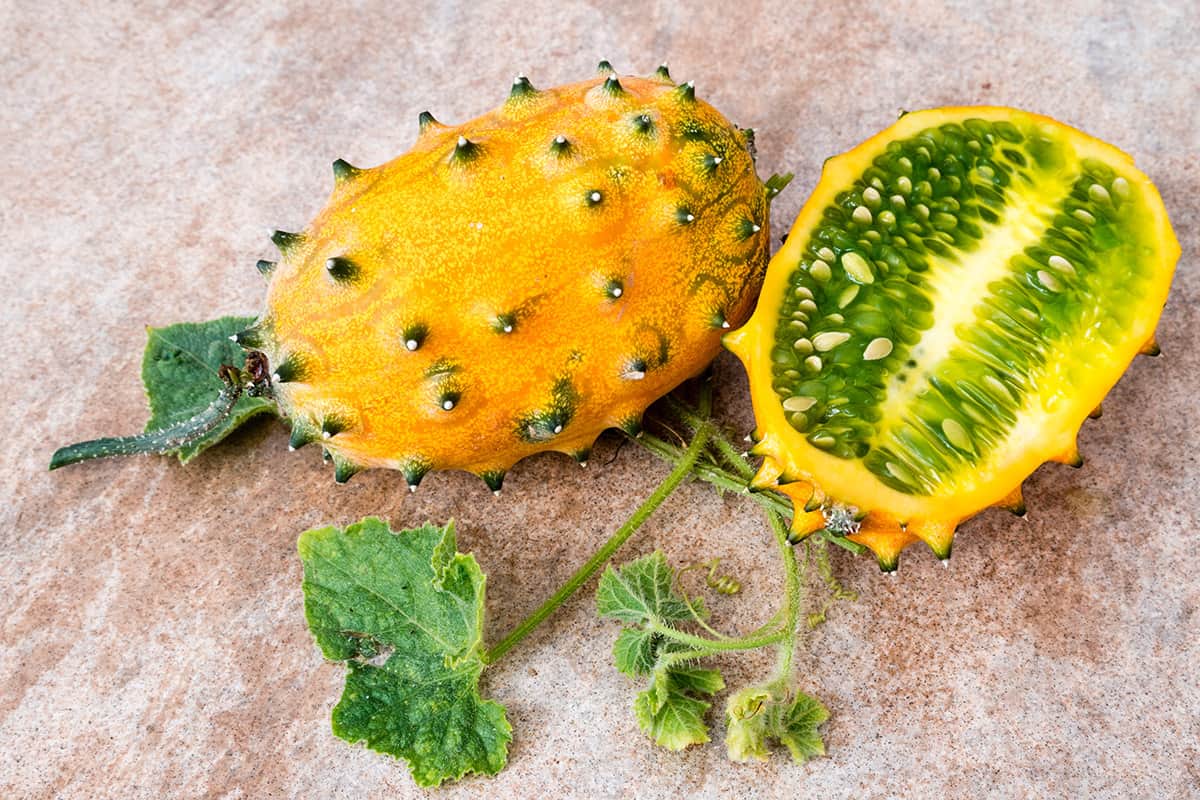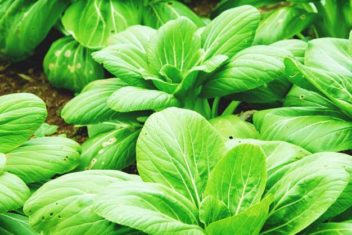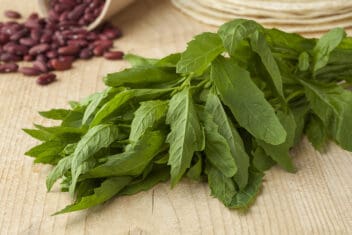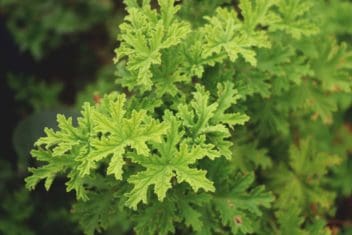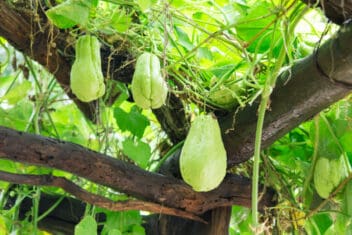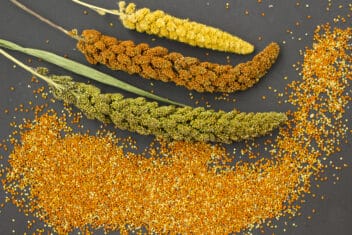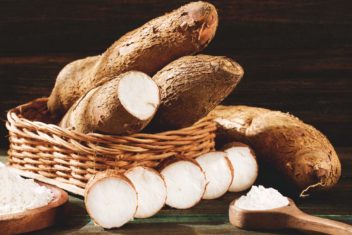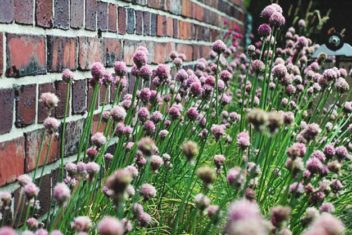I’d never heard of growing horned melons until last season when I found some seedlings. I planted them and they took off, producing a bucket load of melons.
As their name suggests, they have horned skin and look more like a cucumber on the inside than a melon. They have a wonderfully unique flavor, something like banana mixed with lime.
Plus, the plant suffers from few pests and diseases.
On top of all that, horned melons add an ornamental feel to your garden, so who wouldn’t want to give these tasty, peculiar fruits a go?
What is Horned Melon?
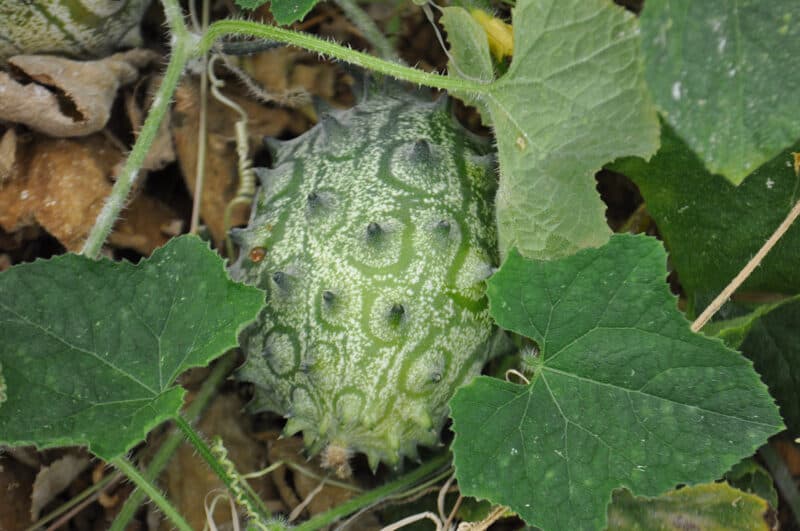
Cucumis metuliferus is known as horned melon, kiwano, jelly melon, or African horned cucumber.
It’s native to South Africa but has made its way to North America, where it grows well in the right conditions.
Horned melon resists many of the common pests and diseases that most other melons suffer from, so it’s a good option to try if you’ve struggled with diseases or haven’t tried growing melons before.
Although I’ve seen horned melon cultivars of different colors and sizes, the plants and seeds are generally are marketed under the generic name of horned melon.
How to Plant Horned Melon
Horned melons grow well in zones 9 to 11. Plant in full sun with a little afternoon shade, if possible.
I find this plant likes quite a specific pH, so aim for 6 to 6.5. If you have clay or loamy soil, your horned melon will be in heaven.
Use a trellis or something similar to allow the vine to climb. The fruit is small enough that it won’t break on the vine if you grow it vertically.
You can also allow the vine to trail along the ground, but make sure you keep the bugs away from the mature fruit.
Planting Seed
Plant in spring when the temperatures are consistently warm. When it’s always over 55ºF, plant your seeds directly into the garden. Make sure the danger of frosts has passed. Plant a little late if frosts may make a comeback or be ready to protect your plants.
You can start horned melons inside if the temperature is not quite warm enough outside, but move them out as soon as the temperature allows.
Plant the seed about 1/2 an inch to 1 inch deep. Sow in groups of three and space those clusters out to 18 inches apart. Water well, wetting the soil down to an inch.
You should see germination in about three weeks or less.
Planting Seedlings
Dig a hole about the size of a standard dinner plate. Plant two or three seedlings and angle them away from each other. The vine of horned melon is quite compact.
Caring for Horned Melon
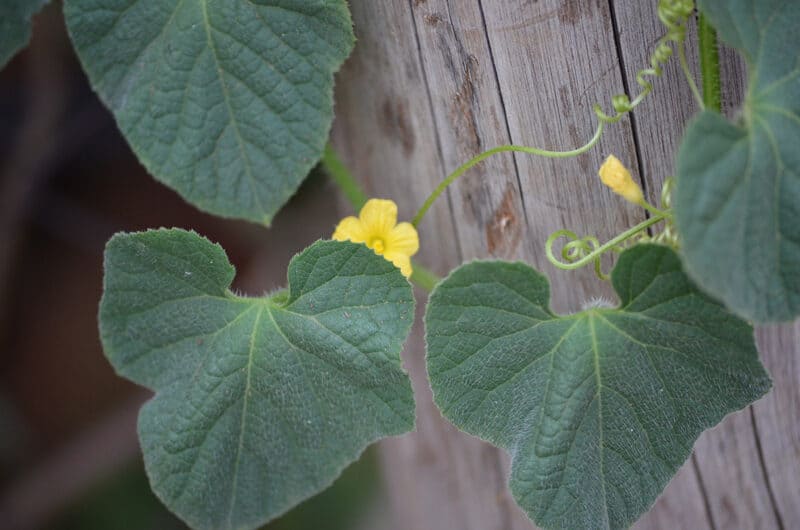
With just a little work, horned melon is easy to look after. The plant will reward you with a lot of fruit.
Fertilizer
Horned melons need regular fertilizer. It benefits from a couple of applications. I used a general fertilizer with an NPK ratio of 6-10-10.
Follow the instruction on the container for application amounts. Sprinkle a handful around each plant and dig it in gently. Water well.
Once the temperatures are consistently over 70ºF, add about 2 inches of compost as mulch. This will strengthen the plant and enable the soil to hold moisture.
Water
Give horned melons a single deep watering once per week. If you provide a little water often, you will end up with shallow, weak roots.
A deep watering encourages deep root development and a healthy plant.
Make sure you water the base of the plant where the stem enters the ground. You will invite viral and soil-borne pathogens if you water onto the foliage.
As the fruit ripens and nears its mature color, cut back on watering. This will improve the flavor of the mature fruit at harvest. You don’t want to stress the plant, however. Don’t let it wilt.
This method may take a while for you to get the hang of. Watch the horned melon in the first season and get used to how it grows. In your second season, you should be confident about when to withhold some water.
Pinching
There’s no need to prune, but like most melons, you can pinch the leader off after it has reached six feet. This is to encourage the plant to spread wide and hopefully produce more female flowers and more fruit.
Companion Planting for Growing Horned Melon
There are a lot of plants that grow well with horned melon, including:
- Cabbage
- Cauliflower
- Brussel sprouts
- Carrots
- Peas
- Kale
- Spinach
- Sunflowers
- Lettuce
- Radish
- Nasturtiums
- Dill
- Borage
- Parsley
- Marigold
Common Problems and Solutions for Growing Horned Melon
Luckily, horned melon is resistant to root-knot nematode and some mosaic viruses, things that plague other melons.
There are still a few pests and diseases to watch for, however.
Cucumber Mosaic Virus
This is not one of the many mosaic viruses that horned melon is resistant to. Aphids transmit this virus. The leaves become yellow and brittle, and the fruit might be deformed and take on a bitter flavor.
The discoloration of the leaves affects the plant’s ability to photosynthesize properly, so the whole vine becomes sick and weak.
If you control the aphids, you can prevent the disease. If you start to see aphids, spray with neem oil and pyrethrum.
Unfortunately, if your horned melon is badly affected by this virus, you’ll need to remove it and destroy the plant.
Watermelon Mosaic Virus
This virus is also transferred to horned melons by aphids and other little insects. It usually results in overly small fruit and deformed plants in some cases.
You will notice the yellowing of leaves initially. This yellowing is irregular and is usually around the edges and veins, giving the mosaic appearance. You may see blistering on the leaves and new leaves becoming distorted.
To avoid this virus, remove all debris including weeds and fallen plant material, and keep your tools clean.
Use neem oil regularly to keep aphids from establishing themselves in your horned melon patch. If you wait until the aphids appear and then spray, it is too late. The disease may already be there.
Your goal is to avoid aphids all together.
Fusarium Wilt
This is a soil-borne pathogen and common in North America. It affects the plant’s ability to utilize water through the root system. Eventually, the plant begins to wilt and turn yellow.
First, the older leaves die, then the younger ones. Often, one side of the plant will show symptoms, while the other side looks healthy.
To deal with fusarium wilt, try the following:
- Use organic fertilizer that slowly releases the nitrogen over a longer period of time.
- Weed regularly. Many weed varieties harbor pathogens.
- Clean all tools in bleach and water.
- Use a fungicide. Talk to your local garden center and ask which one is suitable for fusarium wilt.
Harvesting and Using Horned Melon

When the stems holding the melon turn brown, the melon is ready. You should wear gloves as horned melons have little sharp hairs on the stems. Sometimes the spiny skins can stick into your skin as well.
Of course, you can eat the fruits raw, but try making a sauce for meat or use the flesh to make cocktails and smoothies. It’s also delicious as a topping for ice cream or yogurt.
The easiest way to get the flesh out is to scoop it out of the shell with a spoon.
